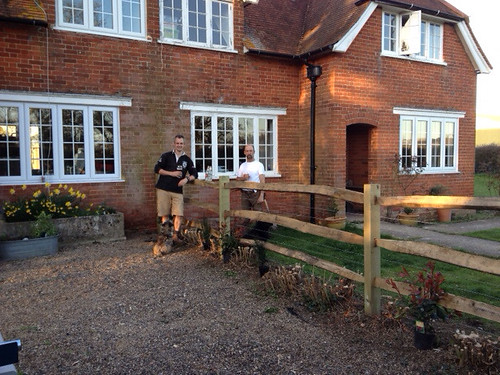Here at AnAcreInHampshire we are really lucky to have a small paddock in front of the house. When we moved here, this was a large open space where horses once grazed - we owned half, and our neighbours the other. There was a clause in our contract that we had to erect a fence to deliniate our boundary, but this was a project that kept dropping down the list of priorities.
Six months later, neighbour Graham and I decided we should crack on with the fence - in the interests of labour saving we got a quote for a contractor to install a post and rail fence, but we thought that £600 for 30 metres of encing was a bit rich. As ever, we decided to DIY!
After shopping around for supplies, we visited a firm called McVeigh Parker in Bradfield - think Scats on steriods! Graham and I wandered round with jaws dropping at all the great stuff they sell... So that was the materiels sorted - how about some tools? We love tools!
- Post driver - these will knock you out in a flash if you catch the top of the post on the lip of the driver. Much easier with two, but still proper hard work. Prevents the top of the post splitting as it would with a sledge hammer.
- Fencing pliers - the only thing short of a grinder that would cut the heavy guage wire and stock fencing. Also has a rough hammer and a prising lever for staples.
- Pair of digging shovels - essential for removing spoil from the bottom of a hole.
- Wire tensioning tool - you won't get any tension in wire or stock fencing without this.
- Trenching shovel - allows a nice small hole to be dug, saving unneccessary work.
- Digging bar - loosens soil in the bottom of the hole prior to use the digging shovels.
Now, all you need is a few days of good weather to dig some holes, drive the posts, fix some stock fencing and attach rails and you are done!
The most important lesson we learned was to brace everything - the stock fencing would exert enough force to pull a 150mm square gatepost (with over a metre driven into the ground) out of vertical. We used a combination of rails to brace as 'pushers' and strained wire as 'pullers' where a pusher would block a gateway.




such other person enjoys benefit thereof, the latter is bound to make compensation to the former in respect of, or to restore, the thing so done or delivered 'pvc fence panels
ReplyDelete